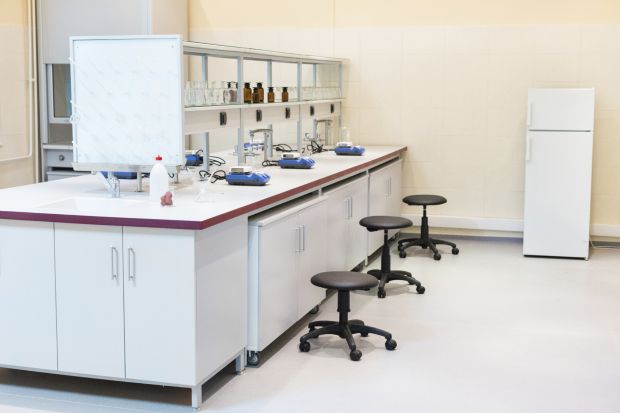Scientific equipment worth hundreds of millions of pounds is lying idle because the government has failed to match scientific capital spending with enough operational funding, MPs have warned.
A House of Commons Science and Technology Committee report on the science budget, released today, said it was “deeply concerned” by the underuse of major facilities and also said that there was a “crisis in funding for mid-size equipment and core infrastructure”.
Since 2011 the research budget has been held flat in real terms, equating to a real terms cut as inflation erodes its value.
In 2013, the chancellor George Osborne announced that the budget for science capital infrastructure would almost double to £1.1 billion. The government has committed to increase this with inflation to 2020-21.
But the report contains a number of examples of this mismatch in funding leading to equipment being underused.
According to the Royal Society of Chemistry, the £400m ISIS neutron facility in Oxfordshire “currently operates well below maximum capacity and will run for only approximately 120 days this year, instead of an optimal 180 days, reportedly due to insufficient funding for operational costs”, the report says.
The Science and Technology Facilities Council Science Board told the committee that “of the UK’s X-ray, neutron and laser facilities, only Diamond (X-rays) [a facility also based in Oxfordshire] is operating close to the optimum number of operations days”.
“Under-exploitation of science infrastructure (failure to ‘sweat the assets’) as a result of inadequate resource for running costs is very wasteful and damaging to UK science,” the STFC told the committee.
Core university infrastructure is also in short supply, the report warns. It cites the University of Oxford as warning that “whilst it lacks the ‘wow’ factor, investment in the routine, workhorse equipment that all institutions need to support excellent research and train the next generation of highly-skilled academic and industrial researchers is vital”.
The committee’s report concludes that the government can properly fund these facilities only if it increases the resource budget.
“We recommend that the Government conduct an urgent review of all existing capital allocations to ensure sufficient resource is in place to fully ‘sweat our assets’ and further recommend development of a more robust system of integrating future capital and resource allocations so that full value is realised for every capital investment,” the report concludes.
Elsewhere, the report urges the government to produce a “roadmap” for increasing the UK’s public and private research and development investment to 3 per cent of GDP, an EU target. In 2013, the UK spent 1.67 per cent, the report says.
The committee also said it was “disappointed” that the government had still failed to respond to the Dowling Review, an assessment of university-business research collaborations released in July.
The chancellor is set to announce research funding for the next five years in the Comprehensive Spending Review on 25 November.
It has been reported today that four departments – transport, local government, environment and the Treasury – have reached deals to cut their spending by an average of 30 per cent over the next four years, but there is no word yet on the level of cuts to the Department for Business, Innovation and Skills, which oversees research spending.
Register to continue
Why register?
- Registration is free and only takes a moment
- Once registered, you can read 3 articles a month
- Sign up for our newsletter
Subscribe
Or subscribe for unlimited access to:
- Unlimited access to news, views, insights & reviews
- Digital editions
- Digital access to THE’s university and college rankings analysis
Already registered or a current subscriber? Login






